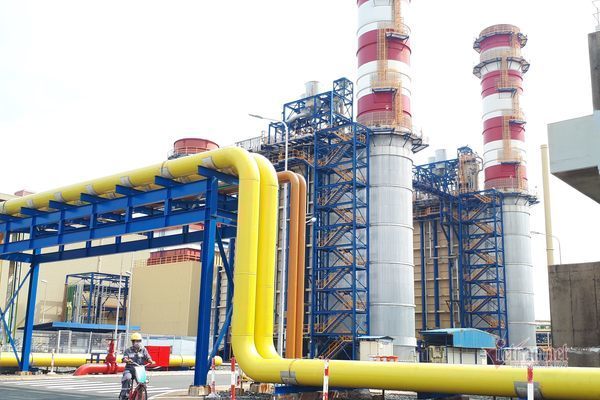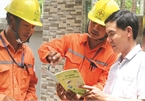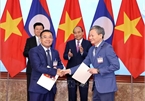
Gas-fired power rush
The Prime Minister has agreed to add the Ca Na LNG (Liquefied natural gas) Power Center project in Ninh Thuan province (phase 1) with capacity of 1,500 MW to the adjusted seventh national power development plan. The plant is expected to become operational in 2025-2026.
The next phases of the project will be considered in the eighth national power development plan for the 2021-2030 period.
The project has a 1,500 MW gas-fired power plant using combined-cycle turbine technology, an LNG import port with 4.8 million tons going throughput a year, and a gas depot with four storage tanks (180,000 cubic meters for each).
The Ninh Thuan provincial authorities have approved the 1/500 detailed construction plan of the LNG complex and the list of component projects in the first phase.
Not only Ninh Thuan, but many other localities have recently become sites of gas-fired power projects.
According to the Ministry of Industry and Trade (MOIT), gas-fired power uses modern technology, has high performance, is friendly to the environment and is suitable to development trends.
The LNG supply in the world is plentiful with competitive prices, which facilitates the development of gas-fired power projects. Meanwhile, credit institutions are ready to provide loans to these projects. The development of this type of power also has received support from the countries and institutions that produce and provide LNG.
Moreover, it takes less time to build a gas-fired power plant than a coal-fired power plant.
Domestic investors
The eighth national power development plan calls for no further coal plants (the projects in the seventh and adjusted seventh plan will still be implemented). Experts believe that it is necessary to diversify electricity generation sources to ensure electricity security and reasonable distribution nationwide.
| Nine gas-fired power plants will ‘surely be built’ with total capacity of 6,500 MW, while projects ‘likely to be built’ have total capacity of 108,000 MW, located from the north (Thai Binh, Nam Dinh, Ninh Binh, Hai Phong and Quang Ninh), to the central and southern regions. The south and south central region have the most. |
It is expected that the proportion of gas-fired power in the eighth plan will increase significantly.
Nine gas-fired power plants will ‘surely be built’ with total capacity of 6,500 MW, while projects ‘likely to be built’ have total capacity of 108,000 MW, located from the north (Thai Binh, Nam Dinh, Ninh Binh, Hai Phong and Quang Ninh), to the central and southern regions. The south and south central region have the most.
However, high investment costs will be a problem for gas-fired power projects. If the selling price is low, investors won’t make a profit. If the price is high, this will affect retail prices.
This was a concern of Nguyen Van Binh, head of the Central Economics Committee, when speaking at Vietnam Energy Summit 2020. With the required capital of up to tens of billions of dollars for power sources by 2030, this will go beyond the state budget’s capacity.
The Party and the State have decided that Vietnam needs to build an energy market where the prices are defined by market supply and demand, and encourage all economic sectors to join the market. However, if there is no reasonable mechanism, it will be impossible to attract private investors to the market.
Private investors, Vietnamese and foreign, have expressed their interest in gas-fired power. However, local authorities have been told to be cautious when choosing investors.
A representative of the Ninh Thuan People’s Committee said that local authorities have set up two groups of criteria, including mandatory requirements and criteria for assessment so as to choose investors with financial capability and experience.
To date, provincial authorities have completed compensation for site clearance, so that construction can begin in the third quarter of 2021 and the plant can become operational by the third quarter of 2024.
Foreign investors have registered to implement many projects, but the investment progress remains questionable. The negotiations for electricity prices, power purchase agreements and guarantee for exchange rate are all ‘bottlenecks’ that take investors a lot of time.
Involved parties, for example, still cannot fix the electricity price of the Bac Lieu 3,200 MW LNG project. Prior to that, some sources said the price was just 7 cent per kwh (VND1,600). There is no sign showing that Son My 2 project in Binh Thuan can be kicked off in the short term.
Luong Bang

Vietnam to launch competitive retail electricity market in 2023
Vietnam Electricity will conduct price marketization to encourage investment in electricity industry and follow the State-regulated market mechanism.

EVN signs MoU to buy electricity, develop power projects in Laos
Vietnam Electricity (EVN) on December 6 signed various Memoranda of Understanding (MoU) with investors of power projects in Laos to develop and purchase electricity from the neighbouring country in the time ahead.